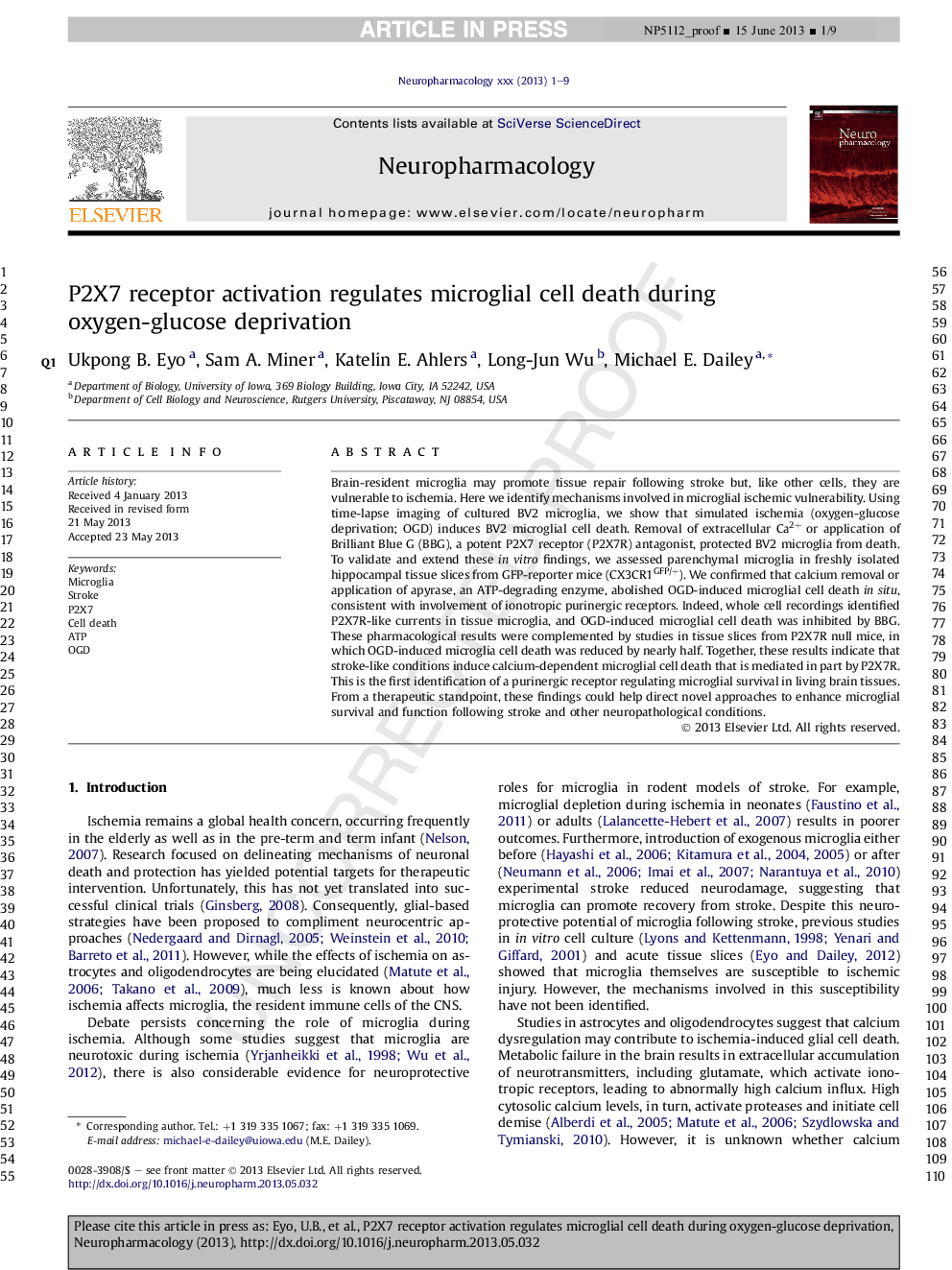| Article ID | Journal | Published Year | Pages | File Type |
|---|---|---|---|---|
| 5814955 | Neuropharmacology | 2013 | 9 Pages |
Abstract
Brain-resident microglia may promote tissue repair following stroke but, like other cells, they are vulnerable to ischemia. Here we identify mechanisms involved in microglial ischemic vulnerability. Using time-lapse imaging of cultured BV2 microglia, we show that simulated ischemia (oxygen-glucose deprivation; OGD) induces BV2 microglial cell death. Removal of extracellular Ca2+ or application of Brilliant Blue G (BBG), a potent P2X7 receptor (P2X7R) antagonist, protected BV2 microglia from death. To validate and extend these in vitro findings, we assessed parenchymal microglia in freshly isolated hippocampal tissue slices from GFP-reporter mice (CX3CR1GFP/+). We confirmed that calcium removal or application of apyrase, an ATP-degrading enzyme, abolished OGD-induced microglial cell death in situ, consistent with involvement of ionotropic purinergic receptors. Indeed, whole cell recordings identified P2X7R-like currents in tissue microglia, and OGD-induced microglial cell death was inhibited by BBG. These pharmacological results were complemented by studies in tissue slices from P2X7R null mice, in which OGD-induced microglia cell death was reduced by nearly half. Together, these results indicate that stroke-like conditions induce calcium-dependent microglial cell death that is mediated in part by P2X7R. This is the first identification of a purinergic receptor regulating microglial survival in living brain tissues. From a therapeutic standpoint, these findings could help direct novel approaches to enhance microglial survival and function following stroke and other neuropathological conditions.
Related Topics
Life Sciences
Neuroscience
Behavioral Neuroscience
Authors
Ukpong B. Eyo, Sam A. Miner, Katelin E. Ahlers, Long-Jun Wu, Michael E. Dailey,
